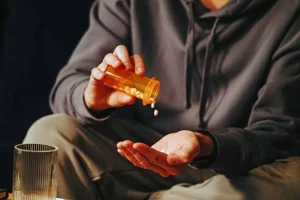Alcohol Withdrawal: Symptoms, Treatment, and Support

Use of this website and any information contained herein is governed by the Healthgrades User Agreement. Seeking help for addiction may seem daunting and possibly even scary, but there are several organizations that can provide you with support. Withdrawal can be broken down into four stages with distinct symptoms. Remove all alcohol from your home or ask a friend or family member to do it for you. This includes beer, wine, and liquor, as well as products that contain alcohol such as rubbing alcohol and vanilla extract. Some researchers note that these prolonged but lower-intensity symptoms can even persist for 2 or more years — especially symptoms that affect your sleep.
Alcohol Withdrawal Delirium
- Moderately severe AWS causes moderate anxiety, sweating, insomnia, and mild tremor.
- Millions of people join support groups to help stop drinking and stay stopped.
- Alcohol withdrawal that progresses to delirium tremens causes intense hallucinations, as well as severe confusion, disorientation, and agitation.
However, in about every fifth person with alcohol withdrawal, symptoms are more severe and may include hallucinosis, seizures, or even delirium. Roughly every second person living with an alcohol use disorder will develop symptoms due to alcohol withdrawal when drinking is strongly reduced or stopped. If symptoms occur, this usually happens between 6 to 24 hours after the last drink or when a strong reduction in drinking took place.
- As the alcohol wears off, these effects lead to common hangover symptoms, such as headache, nausea, and fatigue.
- Because denial is common, you may feel like you don’t have a problem with drinking.
- This could be family members, friends, members of your community, or people in sobriety support groups.
- She’s passionate about empowering readers to take care of their mental and physical health through science-based, empathetically delivered information.
Here’s What Alcohol Withdrawal Symptoms Actually Feel Like

They should also make sure you attend your counseling appointments and visit the doctor regularly for any routine blood tests that may be ordered. People who have an addiction to alcohol or who drink heavily on a regular basis and are not able to gradually cut down are at high risk of AWS. Read on to learn about the symptoms of AWS, as well as how it can be treated or prevented.

What are the symptoms of alcohol withdrawal?
While it’s true that up to 50% of people with AUD experience withdrawal symptoms, only a small portion require medical treatment. Most people with mild to moderate alcohol withdrawal don’t need treatment in a hospital. But severe or complicated alcohol withdrawal can result in lengthy hospital alcohol withdrawal syndrome symptoms stays and even time in the intensive care unit (ICU). Alcohol withdrawal causes a range of symptoms when a person with alcohol use disorder stops or significantly decreases their alcohol intake. The symptoms can range from mild to severe, with the most severe being life-threatening.
How to Recognize and Manage the Symptoms of Post-Acute Withdrawal Syndrome
Generally, you may need treatment for alcohol misuse when you can no longer control the amount you drink or how long you drink. You may also know that you need help with alcohol misuse when you begin experiencing consequences directly related to your alcohol misuse—but you still can’t stop or cut back on the amount that you’re drinking. To learn more about when you may need help for alcohol misuse, visit our informational page on helping someone with an alcohol use disorder or take our alcohol misuse self-assessment.
Impact on your health

For most people, alcohol withdrawal symptoms will begin to subside after 72 hours. If you are still experiencing withdrawal symptoms after three days, talk to your healthcare provider. Alcohol https://ecosoberhouse.com/ consumption spans a spectrum ranging from low risk to severe alcohol use disorder (AUD). In general, the course of alcohol withdrawal is highly variable and somewhat unpredictable.
Treatment algorithm
All these effects are at the basis of topiramate’s ability to reduce the hyperactivity and resulting anxiety of AWS [116]. A “fixed-dose”, rather than a “loading dose” or a “symptoms-triggered” regimen can be adopted for the management of AWS. It’s important to avoid any triggers or situations that may make you want alcohol.




